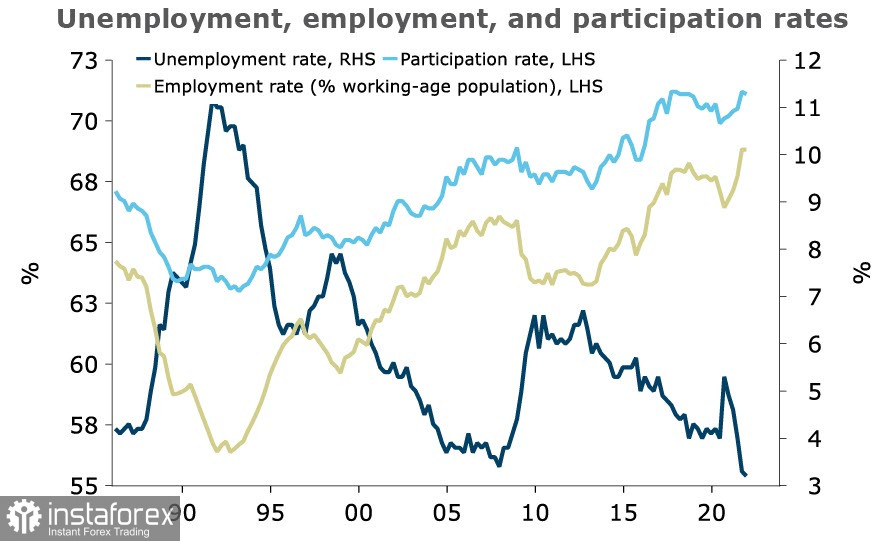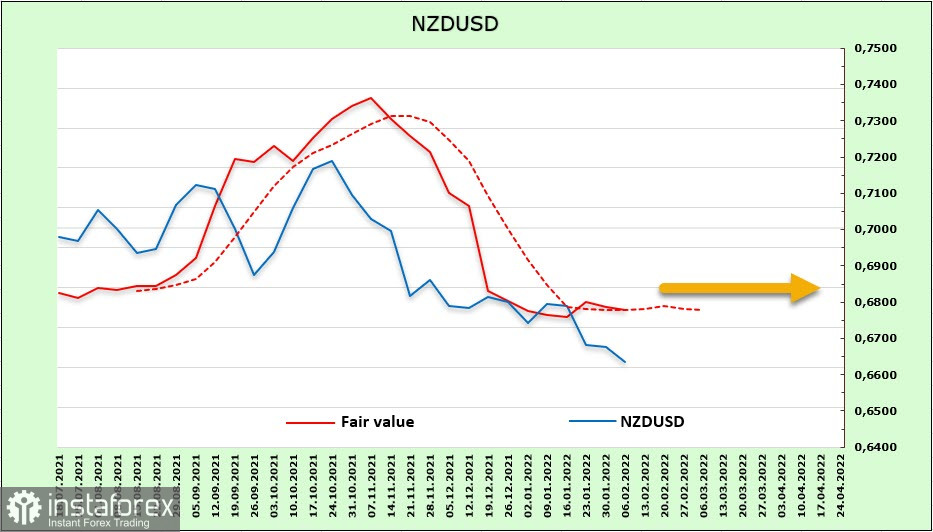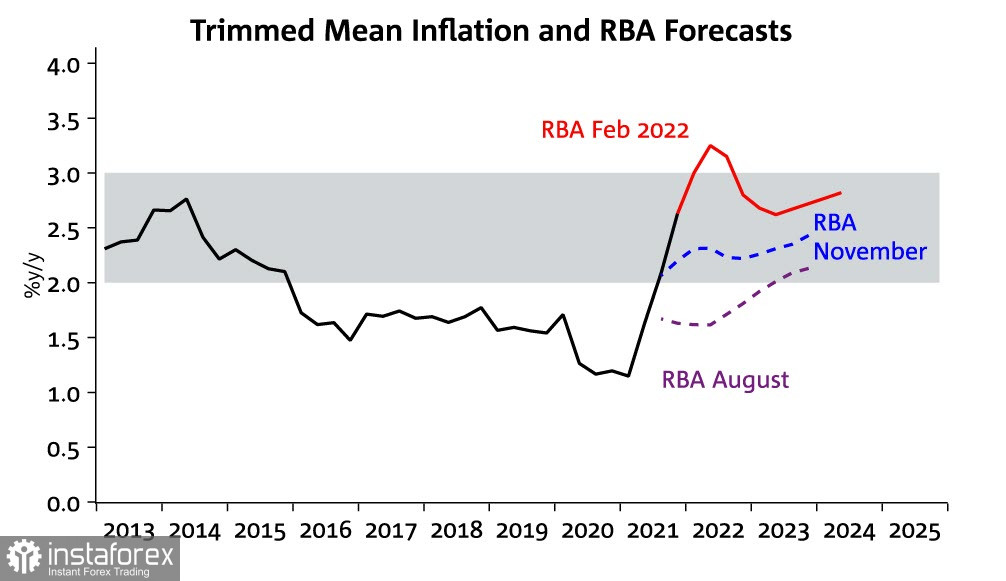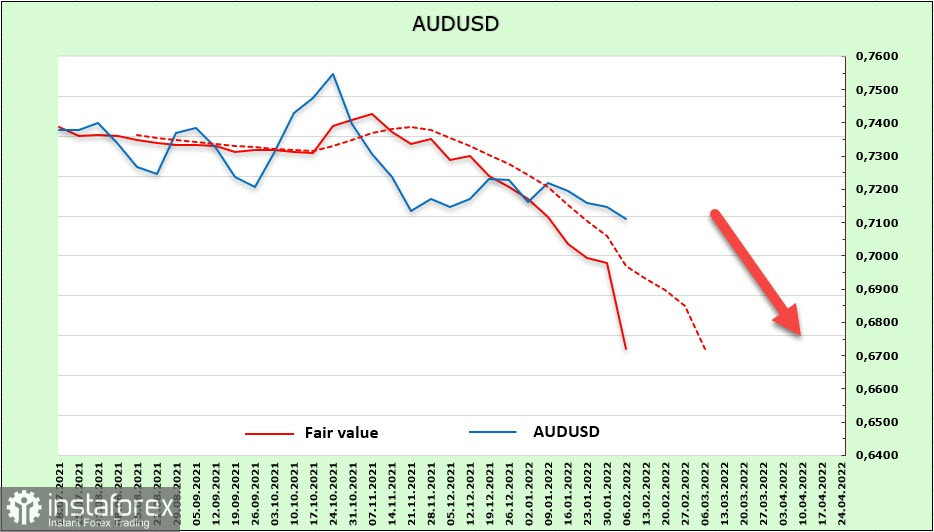The US inflation data for January will be published on Thursday. This is currently a key parameter that the markets evaluate since it is the rate of inflation growth that will most likely determine the speed with which the Fed will raise the rate.
Bank of America's analysts predict that the Fed will raise rates 7 times this year and 4 more times next year. According to the CME, there is only a 17% probability of 7 increases, but the probability is growing rapidly, and changes will be immediately after the release of inflation data.
In the meantime, it is worth noting the growth in demand for risk and a decrease in demand for gold (the CFTC report showed a reduction in the net long position in gold by almost a quarter), which indicates the general increasing optimism for the growth of the global economy.
NZD/USD
The unemployment data, which fell to a record low, still had a negative impact on the forecast for the RBNZ rate. The indicator was expected to decline to 3.0%, and it actually fell to 3.2%, which is fully in line with the RBNZ forecast. Wage growth of 0.7% is also lower than the forecast of 0.9%, and although the data is generally very good, the markets still revised their forecasts for the rate. The probability of an increase in the RBNZ rate in February decreased by 0.5%, as the period of good data is likely to end.
The RBNZ will publish its inflation forecast tomorrow, where it will be clear what to prepare for at the February 23 meeting. If earlier, there was a possibility of a rate increase by 0.5%, now, the forecasts are inclined to increase by 0.25%, which is already taken into account in prices and is unlikely to cause an increase in the New Zealand dollar.
Nevertheless, it still has a chance to resume growth. The market expects the rate to reach 3% in April 2023, which is about 1.25% more than the Fed forecast. So, the only thing we can do is to wait for major traders to start buying NZD with the expectation of a higher yield.
Buying NZD in the futures market has not yet begun, despite the long-term prerequisites. According to the CFTC report, the net short position is -777 million and the weekly change is -56 million. There are no positive dynamics. The negative effect is slightly offset by growth in bond yields, but it is still too early to count on a change in financial flows in the aggregate.

The New Zealand dollar formed a low of 0.6520, which is likely to be the pivot point from which this currency will rise, but so far the prerequisites are very weak. A more likely scenario is trading in a range near the lower border of the bearish channel. The nearest resistance is 0.6690, then 0.6820.
AUD/USD
The January business survey from NAB showed, on the one hand, strong fears about the spread of Omicron, and on the other hand, these fears turned out to be exaggerated. Capacity utilization has increased, wage fund is strongly rising, and business confidence is going up.
The RBA made several comments last week, of which the main thing can be highlighted – the RBA misinterpreted the impact of COVID-19 on the economy and, in particular, on inflation and unemployment, as a result of which it made the second major change to its forecasts in three months.

Former RBA Board Member, John Edwards, suggests that the RBA will consistently raise the rate 4 times to 0.25% at the end of the year. But even if this forecast comes true, the RBA will still lag behind the Fed.
Despite a slight correction (+264 million), the Australian dollar's net short position was -5.691 billion at the time of the formation of the CFTC report. The strongest bearish advantage shows that speculators have not yet started buying the Australian currency and assume that the price may further fall. The estimated price goes down without signs of a reversal.

The Australian dollar rose to the middle of the bearish channel amid the general growth of interest. Further growth to the border of the channel 0.7310/30 is not excluded, but unlikely. A subsequent decline looks more reasonable. It is also possible to update the low of 0.6970 and further move to the long-term target of 0.6760.





















